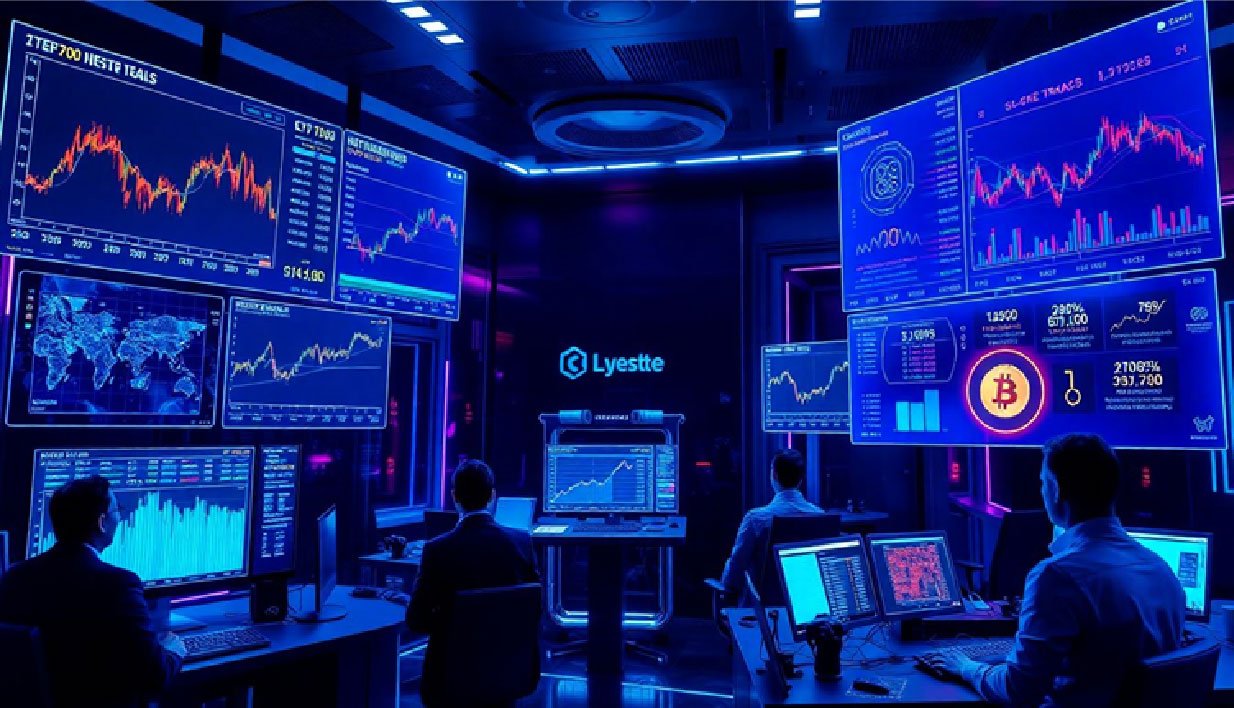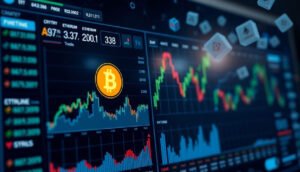Crypto
The Future of Cryptocurrency Bots in Financial Markets

The cryptocurrency market operates 24/7, powered by increasingly sophisticated algorithms that drive trading activity. As the complexity of digital assets grows, automated systems have become indispensable for investors of all levels. The rise of trader bots represents a key shift in how markets operate, as these digital assistants evolve from basic automation tools into advanced platforms leveraging cutting-edge technology. This technological transformation is fundamentally changing how we approach and interact with digital asset markets.
Evolution of trading bot technology
Current landscape
Today’s cryptocurrency trading bots represent a significant advancement from their early predecessors, which were little more than basic scripted commands. Modern systems incorporate sophisticated analysis tools and can process vast amounts of market data in milliseconds. However, they still face notable limitations, particularly in adapting to rapidly changing market conditions and managing complex risk scenarios.
The most significant challenges facing current trading bot technology include:
- Limited ability to interpret market sentiment and news impact
- Difficulty in adapting to sudden market volatility
- Restricted cross-market analysis capabilities
- High technical barriers to entry for average users
These limitations have created a clear roadmap for future development, pushing the industry toward more sophisticated and accessible solutions.
Next-generation capabilities
The next wave of trading bot technology is set to overcome current limitations through revolutionary advances in computing and artificial intelligence. Quantum computing, for instance, promises to process complex market calculations at unprecedented speeds, while edge computing will reduce latency in trade execution to microseconds.
These technological advances are enabling trading bots to:
- Process market data in real-time across multiple exchanges
- Adapt strategies instantly based on changing conditions
- Execute trades with minimal slippage
- Integrate advanced risk management protocols
The implementation of these capabilities is already showing promising results in testing environments, with some systems demonstrating up to 40% improvement in reaction time to market changes compared to traditional approaches.
Revolutionary technologies shaping the future
Advanced AI integration
Artificial Intelligence is revolutionizing how trading bots analyze and respond to market conditions. Neural networks, trained on vast datasets of historical market behavior, can now identify patterns too subtle for human traders to notice. Natural Language Processing (NLP) capabilities allow bots to analyze news articles, social media sentiment, and market reports in real-time, providing a more comprehensive view of market dynamics.
A key development has been the integration of deep learning models that can:
- Analyze market sentiment across multiple languages and sources
- Predict price movements based on historical patterns
- Identify market manipulation attempts
- Adjust trading strategies based on performance feedback
This technological evolution represents a significant step forward in creating more intelligent and adaptable trading systems that can operate effectively across various market conditions.
Infrastructure innovations
The foundation of future trading bot capabilities lies in significant improvements to underlying infrastructure. The rollout of 5G networks is drastically reducing latency in trade execution, while Internet of Things (IoT) integration is creating new data sources for market analysis. Cloud computing advances are making sophisticated trading algorithms accessible to a broader range of users, democratizing access to advanced trading capabilities.
Democratization of trading
Accessibility improvements
The future of cryptocurrency trading bots lies not just in their technological capabilities, but in their accessibility to everyday traders. A significant shift is occurring from complex, code-heavy platforms to intuitive, visual interfaces that anyone can use. This transformation is breaking down the traditional barriers that have kept sophisticated trading strategies out of reach for many potential users.
Visual programming interfaces now allow traders to create strategies by simply dragging and dropping elements, while mobile integration enables monitoring and management from anywhere. These improvements have led to a 300% increase in retail trader adoption of automated trading systems over the past year.
Social trading evolution
The future of trading bots extends beyond individual operation to embrace collaborative and community-driven approaches. Social trading platforms are emerging as powerful ecosystems where traders can share strategies, learn from experienced users, and even automatically replicate successful trading patterns.
Key developments in social trading include:
- Strategy marketplace integration
- Real-time performance analytics sharing
- Community-vetted risk management protocols
- Collaborative strategy development tools
These social features are transforming how traders learn and adapt their strategies, creating a more inclusive and educational trading environment.

Market impact and adoption
Institutional transformation
Major financial institutions are increasingly integrating automated trading systems into their cryptocurrency operations, signaling a fundamental shift in market structure. This institutional adoption is driving improvements in market liquidity and price discovery mechanisms.
The impact of institutional bot trading is evident in several key areas:
- Reduced market volatility through improved liquidity
- More efficient price discovery across exchanges
- Standardization of trading protocols
- Enhanced market depth and stability
These changes are creating a more mature and reliable cryptocurrency market that can better serve both retail and institutional investors.
Retail trading revolution
The retail trading landscape is undergoing a dramatic transformation as advanced trading tools become more accessible. Average traders now have access to sophisticated algorithms that were once the exclusive domain of large institutions. This democratization is leading to more informed trading decisions and better risk management among retail investors.
Educational Integration
The integration of educational resources directly into trading platforms marks a significant shift in how new traders enter the market. Interactive learning modules help users understand market dynamics in real-time, while they execute trades. Social trading features create an environment where newcomers can learn from experienced traders, fostering a community-driven approach to skill development. This collaborative ecosystem is further enhanced by knowledge bases where traders share insights and collectively optimize their strategies.
Risk Management Tools
Modern trading platforms now incorporate sophisticated risk management capabilities that were once available only to institutional traders. Automated portfolio rebalancing maintains desired asset allocations while dynamic position sizing algorithms adjust trade volumes based on real-time market volatility. The integration of on-chain data into risk models provides a more comprehensive view of potential market risks, enabling traders to make more informed decisions.
Future Challenges and Solutions
Technical Considerations
The evolution of trading bot technology faces several critical technical challenges that are driving innovation in the field. Edge computing implementation is reducing latency in trade execution to microseconds, while quantum computing development promises to revolutionize complex market calculations. Cross-chain infrastructure improvements are enabling seamless multi-market trading, creating new opportunities for arbitrage and portfolio diversification.
The emergence of 5G networks is transforming data transmission capabilities, allowing for near-instantaneous market updates and trade execution. This technological advancement is further enhanced by IoT integration, which provides real-world event-driven trading signals that can be processed and acted upon with unprecedented speed and accuracy.
Regulatory Landscape
The regulatory environment for cryptocurrency trading bots is rapidly evolving, with new frameworks emerging across different jurisdictions. Compliance automation is becoming increasingly sophisticated, with built-in checks that ensure trading strategies adhere to local regulations. This trend toward automated compliance is particularly crucial as global standardization efforts gain momentum.
Trading platforms are developing comprehensive audit trails and reporting features that satisfy tax requirements across multiple jurisdictions. These developments are paving the way for institutional adoption while protecting retail traders through improved transparency and accountability measures.
Conclusion
The future of cryptocurrency trading bots represents a convergence of technological innovation and market democratization. As these systems become more sophisticated and accessible, they are reshaping the trading landscape for both retail and institutional investors. The adoption timeline suggests rapid acceleration over the next few years, driven by improved user interfaces, enhanced security measures, and more robust regulatory frameworks.
For More Information Visit Loopermagazine
-

 Celebrity1 year ago
Celebrity1 year agoWho Is Jordan Broad?: The Untold Story of Ashley Broad Husband
-

 Celebrity1 year ago
Celebrity1 year agoWho Is Mary Ryan Ravenel?: Inside The Life Of Thomas Ravenel’s Ex-Wife
-

 Celebrity1 year ago
Celebrity1 year agoWho Is Noelle Inguagiato?: The Untold Story Of Jesse Watters Ex-Wife
-

 Celebrity1 year ago
Celebrity1 year agoWho Is Dolphia Parker?: Everything About Dan Blocker’s Wife
















